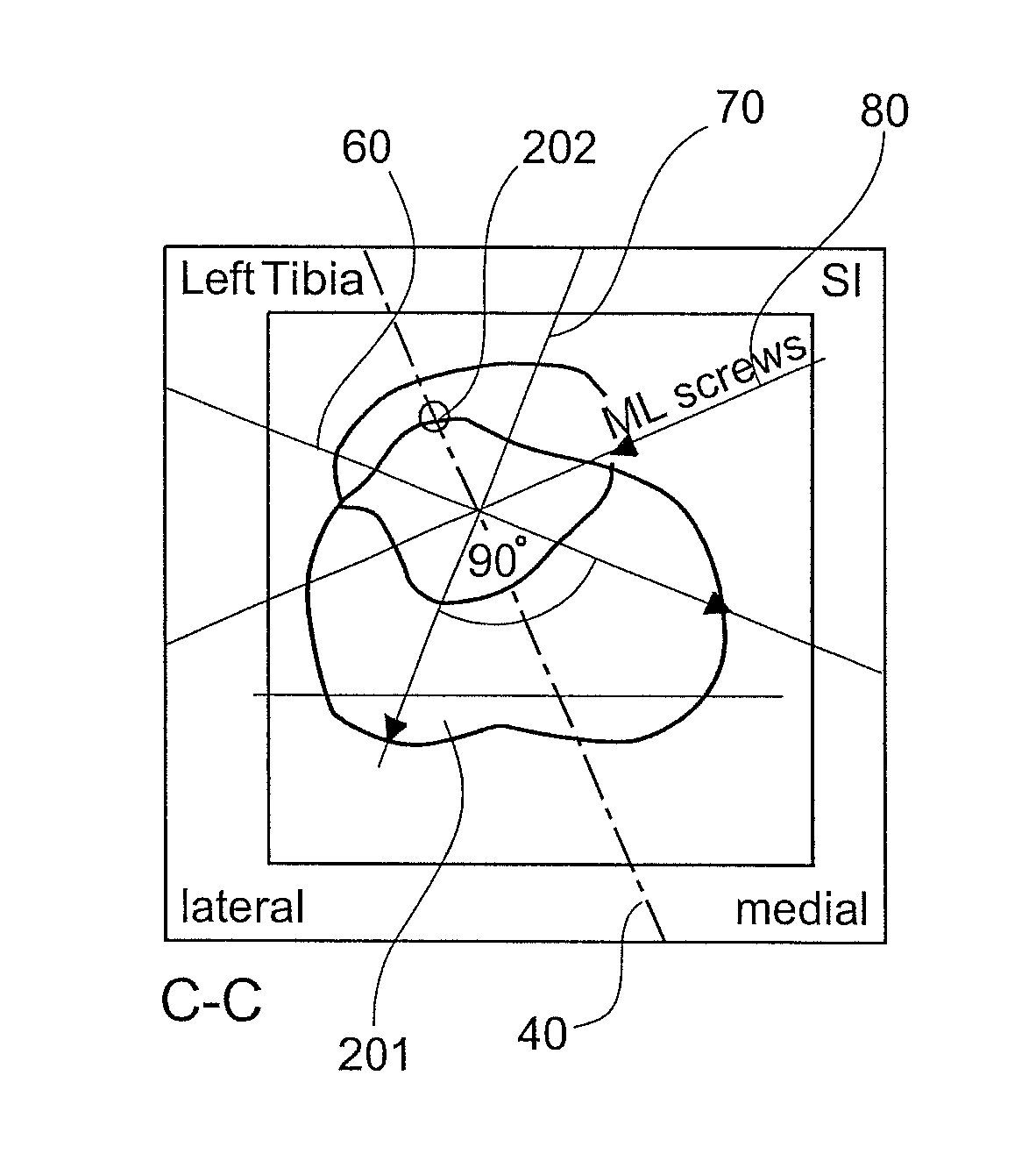Method for tibial nail insertion
a technology of tibial nail and insertion device, which is applied in the field of tibial nail insertion device, can solve problems such as iatrogenic fractures, and achieve the effects of improving clinical outcome, improving insertion characteristics, and avoiding hammering
- Summary
- Abstract
- Description
- Claims
- Application Information
AI Technical Summary
Benefits of technology
Problems solved by technology
Method used
Image
Examples
first embodiment
[0051]In a next step, in accordance with the invention, the tuberositas tibiae plane is identified. This identification is performed by firstly identifying the tuberositas tibiae and the entry point into the medullary channel on the upper surface of the tibia, and secondly by identifying the axis of the medullary channel. The tuberositas tibiae, the entry point as well as the axis of the medullary channel lie on the tuberositas tibiae plane.
[0052]The intramedullary nail is aligned in a following step, such that the radius of the curved section of the intramedullary nail lies in the tuberositas tibiae plane.
second embodiment
[0053]Alternatively, in accordance with the invention, a sagittal plane of the tibia is identified.
[0054]Then, the intramedullary nail is firstly aligned with the sagittal plane, i.e. the radius of the intramedullary nail lies in the sagittal plane, and secondly is externally rotated by an angle between 13 degrees to 37 degrees with respect to the sagittal plane orientation of the tibia previously determined.
[0055]In a subsequent step, the intramedullary nail is inserted into a marrow channel of the tibia through an entry point in the tibial plateau.
[0056]Finally, screws may further be placed in a tibia plateau of the tibia into which the intramedullary nail is to be inserted. The actual position and orientation of each screw depends on the actual design of the driving end portion of the intramedullary nail. Finally, further locking screws are inserted through transverse bores in the non-driving end portion of the nail, so that the distal portion of the tibia may be reliably fixed r...
PUM
 Login to View More
Login to View More Abstract
Description
Claims
Application Information
 Login to View More
Login to View More - R&D
- Intellectual Property
- Life Sciences
- Materials
- Tech Scout
- Unparalleled Data Quality
- Higher Quality Content
- 60% Fewer Hallucinations
Browse by: Latest US Patents, China's latest patents, Technical Efficacy Thesaurus, Application Domain, Technology Topic, Popular Technical Reports.
© 2025 PatSnap. All rights reserved.Legal|Privacy policy|Modern Slavery Act Transparency Statement|Sitemap|About US| Contact US: help@patsnap.com



